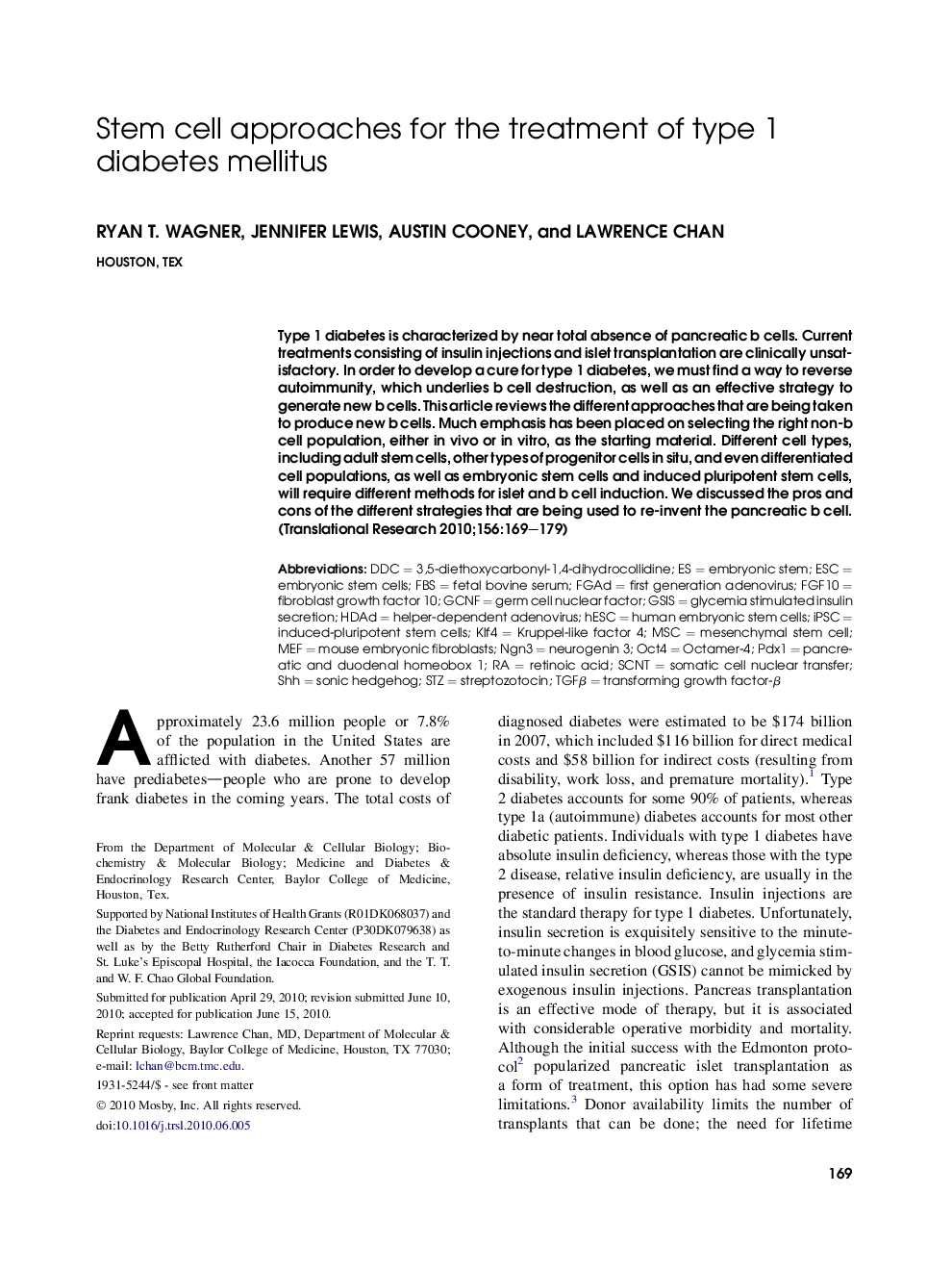| Article ID | Journal | Published Year | Pages | File Type |
|---|---|---|---|---|
| 3840837 | Translational Research | 2010 | 11 Pages |
Type 1 diabetes is characterized by near total absence of pancreatic b cells. Current treatments consisting of insulin injections and islet transplantation are clinically unsatisfactory. In order to develop a cure for type 1 diabetes, we must find a way to reverse autoimmunity, which underlies b cell destruction, as well as an effective strategy to generate new b cells. This article reviews the different approaches that are being taken to produce new b cells. Much emphasis has been placed on selecting the right non-b cell population, either in vivo or in vitro, as the starting material. Different cell types, including adult stem cells, other types of progenitor cells in situ, and even differentiated cell populations, as well as embryonic stem cells and induced pluripotent stem cells, will require different methods for islet and b cell induction. We discussed the pros and cons of the different strategies that are being used to re-invent the pancreatic b cell.
